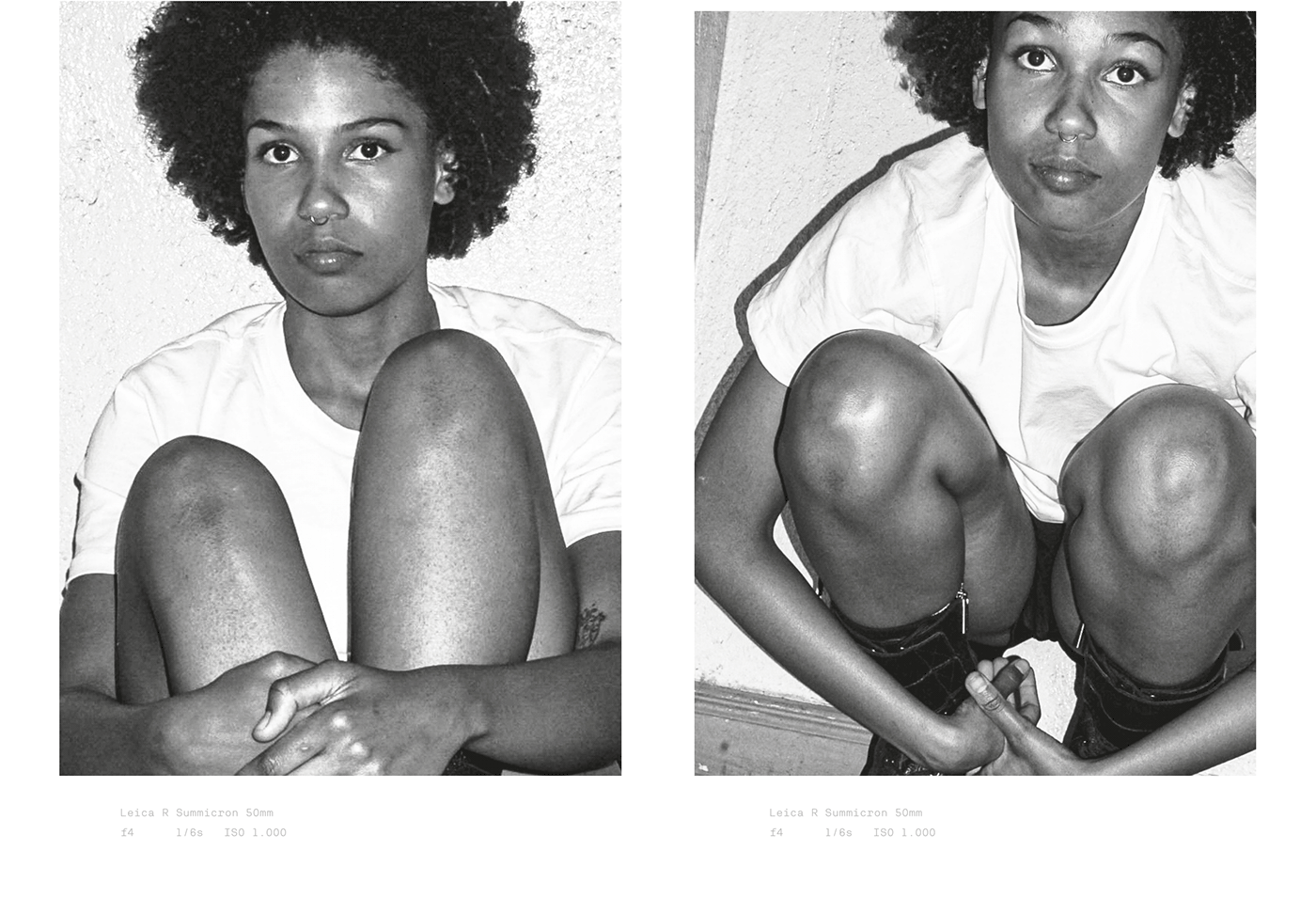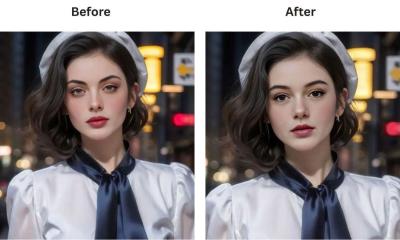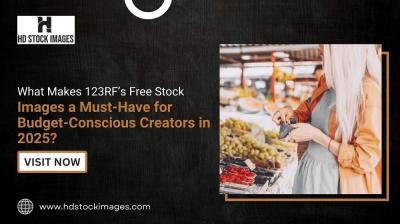In today's fast-paced world, editorial photography plays a pivotal role in shaping narratives and visual stories. Whether it's for magazines, newspapers, or online platforms, compelling images help communicate messages that words alone sometimes can't convey. As we delve deeper into this fascinating field, we'll explore its significance in modern media coverage and how it has adapted over time to meet the evolving needs of audiences.
The Evolution of Media Coverage

Media coverage has undergone a remarkable transformation, especially with the advent of digital technology. Early journalism was primarily text-based, relying heavily on written articles and limited visuals. However, as photography emerged, it quickly became a game-changer in how stories were told.
With the rise of newspapers in the 19th century, editorial photography started to gain momentum. Publications began to realize the power of images to capture readers' attention and evoke emotions. They began featuring photographs alongside articles, creating a more dynamic reading experience. Here are a few key developments in this evolution:
- The Birth of Photojournalism: Pioneers like Jacob Riis and Lewis Hine used photography to expose social issues, employing powerful images to influence public opinion and promote change.
- Advancements in Technology: The introduction of 35mm cameras and faster film speeds allowed photographers to capture candid moments, making it easier to tell stories in real time.
- Television and Broadcast Media: The rise of television in the mid-20th century brought a new visual medium, where editorial photography complemented video footage, expanding storytelling avenues.
As the internet took hold in the late 20th century, the landscape shifted again. Online publications emerged, demanding quicker turnaround times for stories and images. This urgency gave rise to a new wave of digital editorial photography:
- Social Media Impact: Platforms like Instagram and Twitter have transformed how audiences consume and share news. Photographers now find themselves not just telling stories but also engaging directly with viewers, often in a matter of seconds.
- Mobile Journalism: The ability to capture high-quality images with smartphones has democratized editorial photography. Now, anyone with a smartphone can potentially become a photojournalist, sharing their perspective with a global audience.
- Demand for Authenticity: In an era of digital manipulation, audiences crave authenticity. Editorial photographers are tasked with providing real, unfiltered images that reflect the true essence of events and stories.
Today, editorial photography holds a crucial position in modern media coverage, serving as both an art form and a vital tool for communication. It enhances the storytelling experience, helping to create compelling narratives that resonate with audiences worldwide. As we look to the future, the role of editorial photography will inevitably continue to evolve, adapting to new technologies and changing viewer expectations.
Also Read This: Exploring Seasonal Trends on Imago Images for Timely Marketing Content
The Importance of Visual Storytelling

Visual storytelling is more than just a trend; it’s a fundamental aspect of communication in our media-saturated world. Editorial photography stands at the forefront of this evolution, providing a powerful medium through which artists, journalists, and brands can convey complex narratives in relatable ways. But why is visual storytelling so vital in today's context? Let's break it down!
Humans Are Visual Creatures
Did you know that our brains process images 60,000 times faster than text? This staggering statistic underlines a simple truth: people are naturally drawn to visuals. In an age where attention spans are shorter than ever, compelling images can grab thoughtless scroll/scroll motions and turn them into engagement. Whether it's a photo that captures the emotion in a protest or a serene snapshot of nature, effective editorial photography can evoke feelings, provoke conversations, and inspire action.
Context and Depth
Unlike mere illustrations or stock images, editorial photography often captures real moments in real environments. This authenticity adds layers of context and depth that words alone might struggle to provide. Consider this:
- A photograph of a crowded city street at sunset can convey a sense of hustle and bustle, vibrancy, and culture—elements that text would need paragraphs to describe.
- Images of individuals impacted by a news event can humanize a story, inviting readers to engage on a more emotional level.
In short, editorial photography invites the audience into the story, fostering a connection that text-heavy articles often cannot achieve alone.
Enhancing Brand Messages
For brands and businesses, the integration of editorial photography into media coverage is crucial. In a marketplace saturated with advertising, how can companies stand out? Visual storytelling allows brands to express their values, missions, and unique selling propositions visually. Stunning, authentic images can increase shareability on social media and enhance engagement rates.
Imagine a company advocating for environmental sustainability: using pictures of their eco-friendly products in action or the communities they support can effectively communicate their commitment in ways that resonate with consumers.
In essence, editorial photography is not just about capturing beautiful images; it’s a strategic tool that allows brands to reinforce their narratives and connect deeper with their audiences.
Also Read This: Imago Images vs. Competitors: What Makes It Stand Out in the Stock Photo Market
Current Trends in Editorial Photography
Just like any other facet of the arts and media, editorial photography evolves continually, building on past styles while adapting to new technologies and societal shifts. In this section, we’ll explore some of the most exciting current trends shaping the landscape of editorial photography.
Diversity and Representation
One of the most vital trends is the push for greater diversity and representation. Audiences are increasingly calling for authenticity and inclusivity, which means that editorial photographers are now striving to tell a broader range of stories featuring people from various backgrounds, cultures, and lifestyles. This rich tapestry of representation not only enhances the narrative depth but also creates a more relatable and equitable media landscape.
Documentary-Style Photography
In contrast to staged or heavily curated shots, many photographers are embracing a documentary approach. This style aims to capture natural moments as they unfold, telling authentic stories without the constraints of a script or predefined narrative. It’s about being present in the moment and documenting life as it happens, which resonates strongly with audiences who crave realness. Think candid shots of people in their daily lives or behind-the-scenes images that give insight into a subject's world.
Embracing Technology
Technological advancements are also playing a significant role in shaping editorial photography. With the rise of drones and aerial imagery, photographers can now capture stunning, high-angle perspectives that were once inaccessible. Moreover, the use of augmented reality (AR) and virtual reality (VR) is bringing static images to life, offering viewers immersive experiences like never before. These innovative techniques engage viewers on a new level, providing depth and interaction.
A Minimalist Aesthetic
In contrast to the busy compositions that have ruled past trends, many photographers are gravitating towards a minimalist aesthetic. This style emphasizes simplicity and clean lines, creating balance and allowing the viewer to focus on the subject without distractions. It often results in striking imagery that conveys a message with just a glance.
In summary, editorial photography is constantly evolving, driven by societal needs and technological advancements. These trends not only enhance visual storytelling but also ensure that the medium remains relevant and impactful in the ever-changing landscape of modern media coverage.
Also Read This: How to download Imago Images without watermark for free
5. The Impact of Social Media on Editorial Photography
In today’s fast-paced digital world, social media has transformed the landscape of editorial photography. Gone are the days when a captivating image would be printed in a magazine and sit on a coffee table for weeks. Now, a striking photo can go viral within minutes, reaching thousands—if not millions—of viewers instantly.
Let’s break down how social media has influenced editorial photography:
- Instant Reach: Social media platforms like Instagram, Facebook, and Twitter allow photographers to share their work with a global audience. Editorial photographers can showcase their portfolios in real-time, gaining recognition much faster than traditional methods.
- Direct Engagement: Social media platforms offer photographers the ability to interact directly with their audience. This engagement can lead to valuable feedback and foster a community of fans and fellow creatives.
- New Platforms for Storytelling: Apart from just sharing images, photographers can use stories, reels, and live sessions to convey deeper narratives. This addition can enhance the viewer's experience and understanding of the editorial content.
- Inspiration and Collaboration: Social media has become a hub for inspiration. Photographers can discover new styles, techniques, and trends, often leading to collaborations with other artists that might never have happened otherwise.
However, this new dynamic also brings challenges. With the saturation of images on social media, standing out has become increasingly difficult. Editorial photographers must not only focus on the quality of their imagery but also on how to craft compelling captions and hashtags to maximize their reach. Furthermore, the pressure to constantly produce fresh content can be overwhelming, leading to concerns about maintaining artistic integrity. All in all, while social media has opened up vast opportunities for editorial photography, it has also created a competitive atmosphere that photographers must navigate carefully.
Also Read This: Converting Images to SSTV Scans
6. Challenges Faced by Editorial Photographers
While editorial photography thrives under various opportunities, it certainly isn’t without its challenges. Photographers in this field often face a unique set of hurdles that can test their creativity, resilience, and business acumen.
Here are some of the significant challenges:
- Working with Tight Deadlines: In the world of media, the saying “time is money” rings especially true. Editorial photographers often have to capture high-quality images under tight deadlines, which can lead to stress and compromise on creativity.
- Budget Constraints: Many publications are operating on thinner margins than ever before. This can limit the budget allocated for photographic assignments, making it difficult for photographers to secure the resources or equipment needed to deliver top-notch work.
- Balancing Artistic Vision and Client Needs: Editorial photographers must often juggle their creative desires with the demands of their clients or publications. This balancing act can be tricky—staying true to one’s artistic style while also meeting client expectations is no small feat!
- The Risk of Plagiarism: With images being shared so widely online, there's a persistent risk of plagiarism. Photographers must be vigilant in protecting their work from unauthorized use, which can be a daunting and time-consuming task.
- Adapting to Changing Formats: As media consumption shifts towards digital, editorial photographers must continually adapt to new formats, such as video or interactive media. Keeping up with technology can be demanding, but it's often necessary to stay relevant.
Despite these challenges, many editorial photographers thrive in their craft. Their passion for storytelling through images fuels their determination to overcome obstacles and produce impactful work. It’s this tenacity that keeps the art of editorial photography alive and evolving in our modern media landscape.
Also Read This: Imago Images vs Shutterstock Which One Should You Choose
7. Case Studies: Successful Use of Editorial Photography in Media
When we talk about editorial photography and its impact, a few standout case studies really exemplify how powerful this medium can be in enhancing storytelling. Let’s dive into some great examples that highlight the effectiveness of editorial photography in modern media coverage.
1. National Geographic’s Feature on Climate Change
National Geographic is renowned for its stunning visual storytelling. In a recent feature covering climate change, they utilized editorial photography to showcase the stark realities faced by various ecosystems around the world. From melting ice caps to thriving forests, the visuals were not just compelling; they told a deeper story about urgency and the need for action. Each photograph evoked emotion, prompting the audience to engage with the content on a more personal level.
2. Time Magazine's Person of the Year
Every year, Time Magazine highlights a Person of the Year, and the accompanying editorial photography plays a crucial role in storytelling. A perfect example was the portrait of Greta Thunberg, which captured her fierce determination and seriousness regarding climate protests. The stark black-and-white tones, combined with her evocative expression, conveyed a powerful message: the urgency of youth activism. This photograph didn’t just celebrate an individual; it sparked discussion and brought attention to a pressing global issue.
3. The New York Times Coverage of Social Movements
The New York Times frequently employs powerful editorial photography to accompany their articles on social movements. A notable case was their coverage of the Black Lives Matter protests. The imagery, filled with intensity and emotion, brought readers right into the heart of the protests. Photographers captured moments of solidarity, grief, and defiance, making the coverage resonate deeply with audiences. This kind of impactful visual content not only supports the text but also serves to create a connection with readers, making the stories feel more immediate and relevant.
4. Vogue’s Portraits During the Pandemic
During the pandemic, Vogue used editorial photography to highlight the stories of frontline workers. Their “Heroes” series allowed photographers to capture poignant portraits of healthcare professionals in their scrubs and masks. Each photo told a unique story, showcasing resilience, fear, and determination in the face of a global crisis. This clever and compassionate use of photography helped illustrate the human side of statistics and headlines, allowing readers to connect with the subjects on a personal level.
These case studies illustrate that when done effectively, editorial photography can transcend simple illustration of articles. It becomes a crucial component of storytelling that informs, engages, and evokes emotional responses from audiences. Each of these examples also underscores the versatility of editorial photography in portraying diverse subjects, issues, and narratives.
Also Read This: TikTok Marketing 101: How Brands Can Leverage the Platform
8. Tips for Effective Editorial Photography
If you’re eager to dive into the world of editorial photography—either as a photographer or a content creator—there are several tips to keep in mind to ensure you capture compelling images that resonate with audiences. Here are some insights to help you get started:
1. Know Your Story
Every photograph should tell a story. Before you click the shutter, think about what narrative you want to convey. Whether it's a detailed portrait of a subject or a wide shot of a significant event, understanding the heart of your story will guide your composition and framing choices.
2. Focus on Emotion
Editorial photography excels in capturing human emotions. Whether it’s joy, sorrow, or determination, seek to capture genuine moments that evoke feelings in viewers. These emotional connections can spark discussions and encourage deeper engagement with your content.
3. Pay Attention to Lighting
Lighting can drastically impact the mood of your photographs. Experiment with natural light, different angles, and shadows to create depth and interest. In editorial photography, dramatic lighting can help convey urgency or highlight specific themes in your narrative.
4. Use Composition Techniques
Familiarize yourself with composition techniques like the rule of thirds, leading lines, and framing. These techniques can enhance the visual appeal of your images while guiding the viewer's eye to the focal point.
5. Keep it Authentic
Authenticity is key in editorial photography. Aim to portray your subjects in a way that is true to their story. Avoid staging or overly posed shots; candid moments tend to resonate more with audiences because they convey a sense of reality and honesty.
6. Be Prepared
Editorial environments can be unpredictable. Always carry extra gear, plan your shots ahead, and be ready to adapt to changing situations. Sometimes the best photographs occur unexpectedly, so stay alert and open to new opportunities.
7. Collaborate and Communicate
Work closely with writers, editors, and your subjects to ensure a shared vision for the project. Effective communication fosters a collaborative environment that can lead to stunning results.
Editorial photography is about more than just beautiful images; it’s about capturing moments that matter. By keeping these tips in mind, you can create impactful visuals that enhance storytelling and engage audiences effectively.
Conclusion: The Future of Editorial Photography in Media
As we look ahead, the role of editorial photography in media continues to evolve, adapting to new technologies and shifting audience preferences. Visual storytelling has become more critical than ever, influencing how news is consumed and understood.
Several trends are shaping the future of editorial photography:
- Increased Use of Multimedia: With the rise of digital platforms, moving images and video will complement still photography, creating richer narratives.
- Social Media Integration: Editorial photographers must adapt their styles to fit the fast-paced world of social media, producing visually striking images optimized for mobile viewing.
- A focus on Authenticity: Audiences increasingly crave real stories and genuine emotions, pushing photographers to capture unfiltered moments that resonate.
- Diversity and Inclusion: There is a growing demand for diverse voices and perspectives within editorial photography, leading to more comprehensive coverage of various societal issues.
Moreover, technology will continue to play a significant role in how images are captured and disseminated. Innovations like AI-assisted editing and advanced image sharing platforms are set to enhance the efficiency and impact of visual journalism.
In conclusion, editorial photography remains an invaluable asset in modern media coverage. By embracing new trends and technologies while staying true to the core principles of storytelling, photographers can ensure their work remains vital in an ever-changing landscape.
 admin
admin








